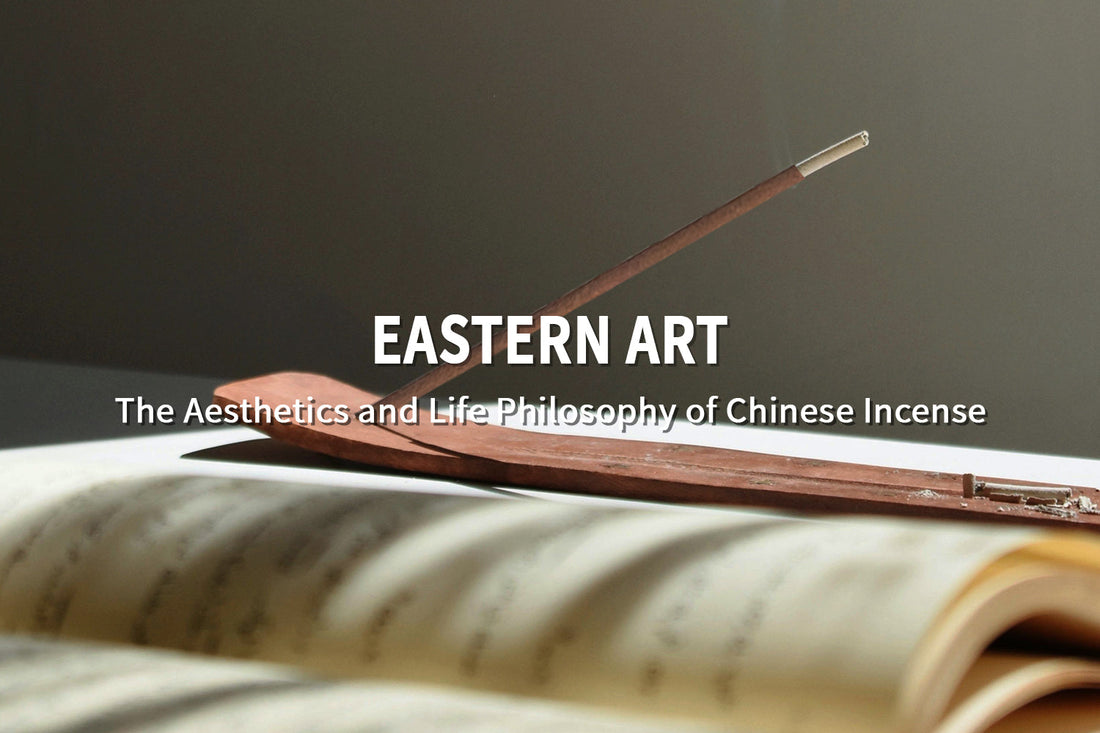
Eastern Art: The Aesthetics and Life Philosophy of Chinese Incense
MasterBaiIn a world full of noise and constant demands, there exists a quiet realm where time slows, the senses awaken, and beauty reveals itself in a curl of rising smoke. This is the realm of Chinese incense—far beyond being just a fragrance product, it is an ancient art form and a way of life that blends aesthetics, philosophy, and daily ritual.
Today, let’s explore the artistic language and lifestyle philosophy behind Chinese incense, and discover how this timeless tradition can add elegance, balance, and mindfulness to modern living.
1. Incense as an Art Form
- Design lies in the careful blending of ingredients, like composing a piece of music.
- Chemistry emerges in how natural resins, woods, and herbs harmonize when burned.
- Sculpture shows itself in the graceful form of each stick.
- Performance begins when it’s lit—the smoke swirls and drifts, creating a fleeting yet eternal dance of beauty.
2. The Essence of Eastern Aesthetics: Simplicity, Elegance, Subtlety
- Simplicity: A single stick of incense, a modest holder, nothing more. This “less is more” mindset draws us to the essence of beauty.
- Elegance: The ever-changing patterns of smoke are graceful and unpredictable, a gift from nature.
- Subtlety: Chinese incense never overwhelms. It lingers softly, inviting you to slow down, lean in, and savor its presence.
This quiet beauty is at the heart of Eastern philosophy: to seek meaning within, not just on the surface.
3. Creating Your Incense Corner at Home
- Choose the location: a windowsill, a shelf, or your nightstand.
- Select a tray: wood, ceramic, or stone works beautifully.
- Pick your holder: a sleek brass piece, a rustic clay stand, or a crystal base—let it feel like a piece of art.
- Add nature: a stone, a dried branch, or a fresh leaf to echo the spirit of incense.
This corner itself becomes a gentle reminder to slow down and breathe.
4. Blending with Modern Interior Design
- Minimalist homes: A clean-lined metal or ceramic holder doubles as functional sculpture.
- Scandinavian spaces: A wood or clay incense burner pairs naturally with organic textures.
- Modern design: A bold geometric incense stand creates a striking contrast with the timeless simplicity of Chinese incense.
Incense smoke softens a room’s edges, adding movement and warmth to still spaces.
5. Decorating Your Space with Scent
- Living room: Choose warm, welcoming scents like rose incense to make guests feel cared for.
- Study or office: Try sandalwood or agarwood to ground the mind and enhance focus.
- Bedroom: Lavender or soft florals create calm, helping you drift into restful sleep.
In this way, incense defines not just your environment but the emotional tone of each room.
6. The Philosophy of “Dao” and Harmony
- Harmony with self: Finding peace through quiet ritual.
- Harmony with others: Sharing incense fosters respect and presence in conversations.
- Harmony with nature: Burning incense honors the gifts of earth and plants, connecting us with the natural world.
Each lighting is not just an act, but a small lesson in balance and unity.
7. Incense as a Gift of Culture and Intention
Fine Chinese incense often comes in packaging that reflects the same elegance as the product itself—handmade paper, calligraphy, or crafted wooden boxes. This makes incense sticks a thoughtful and refined incense gift boxes. To give incense is to offer more than a product—it’s offering a pause, a cultural experience, and a gentle invitation to slow down.
8. A Living Tradition Across Time
Every stick of traditionally crafted incense carries centuries of artistry: the aesthetic of scholars, the wisdom of Taoist and Buddhist practice, and the skill of artisans passed down through generations. By using it, you participate in this living heritage, keeping the flame of culture alive in modern times.
9. Philosophy in Smoke: Impermanence and Eternity
10. Finding Beauty in Everyday Life
Ultimately, Chinese incense teaches us to rediscover life’s overlooked details: the sparkle of dust in sunlight, the comfort of tea, the poetry of rising smoke. It transforms the ordinary into ritual, shifting us from simply passing time to truly savoring it.
